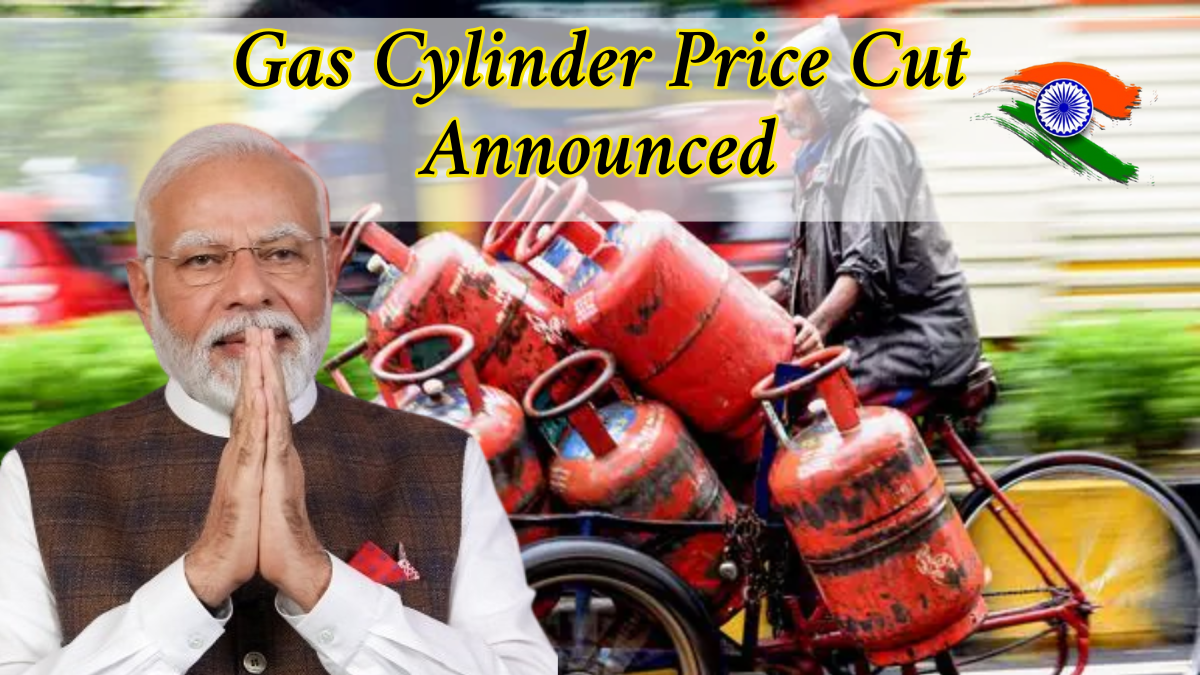In a major relief to households across India, the government has officially announced a significant reduction in domestic gas cylinder prices. This move is part of a broader affordability initiative aimed at reducing inflationary pressure and making essential commodities more accessible to the average citizen. The price drop applies uniformly across the country and is effective immediately.

This proactive decision is not only expected to reduce the financial burden on millions of families but also promote cleaner energy use in Indian kitchens.
Summary of Gas Cylinder Price Reduction (Vertical Table)
| Feature | Description |
|---|---|
| Announcement | Gas cylinder price reduction |
| Effective Date | Immediate |
| Target | Domestic users across India |
| Reduction Amount | Average INR 50 per cylinder |
| Regions Affected | All major cities and towns |
| Reason | To ease inflation and promote clean fuel usage |
| Official Source | Ministry of Petroleum and Natural Gas |
Old vs. New Prices Across Key Regions
| Region | Old Price (INR) | New Price (INR) | Savings (INR) | Percentage Reduction |
| Mumbai | 950 | 900 | 50 | 5% |
| Delhi | 940 | 890 | 50 | 5.32% |
| Kolkata | 960 | 910 | 50 | 5.21% |
| Chennai | 955 | 905 | 50 | 5.24% |
| Bangalore | 945 | 895 | 50 | 5.29% |
| Hyderabad | 950 | 900 | 50 | 5% |
| Pune | 940 | 890 | 50 | 5.32% |
| Ahmedabad | 945 | 895 | 50 | 5.29% |
Why the Price Reduction Matters
1. Economic Relief for Households
Millions of families rely on LPG for daily cooking. With prices reduced, household budgets get a breather, especially in the face of rising costs of living.
2. Promoting Cleaner Energy
The decision encourages a shift from traditional fuels like wood and kerosene to cleaner, safer LPG, reducing indoor air pollution and health risks.
3. Stimulating Domestic Consumption
Extra disposable income may be directed toward other essential needs, indirectly boosting the economy.
Smart Ways to Maximize Savings
| Strategy | Description | Potential Savings | Implementation Ease |
| Bulk Purchase | Buy more when prices are lower | High | Easy |
| Budget Planning | Allocate savings efficiently | Moderate | Moderate |
| Energy Efficiency | Use fuel-efficient stoves | High | Moderate |
| Monitor Usage | Avoid wastage with tracking | Low | Easy |
| Community Sharing | Share resources in group kitchens | Moderate | Challenging |
| Government Schemes | Avail additional subsidies | High | Moderate |
| Maintenance | Keep stoves and cylinders in top shape | Low | Easy |
| Supplier Discounts | Negotiate bulk deals with vendors | Moderate | Challenging |
Environmental and Economic Benefits
- Cleaner Cooking: Reduces dependence on firewood, helping preserve forests.
- Health Improvement: Less indoor pollution leads to fewer respiratory issues.
- Rural Support: Especially helpful in rural areas where traditional fuels are still common.
- Economic Balance: Contributes to inflation control without compromising public welfare.
Frequently Asked Questions (FAQs)
Q1. How much has the gas cylinder price dropped?
A: On average, the price has been reduced by INR 50 across all major cities.
Q2. Is this reduction applicable to all states in India?
A: Yes, the reduction is uniformly applicable nationwide.
Q3. Are commercial cylinders also included in this reduction?
A: No, this price cut is limited to domestic gas cylinders only.
Q4. When do the new prices come into effect?
A: The new prices are effective immediately as per the government directive.
Q5. Where can I verify the updated gas prices?
A: You can check the official Ministry of Petroleum and Natural Gas website or inquire with your local gas supplier.
Q6. What should I do if I’m not charged the new price?
A: Contact your gas agency or the local consumer grievance cell with proof of payment and request immediate correction.
Conclusion
The government’s initiative to reduce gas cylinder prices has come at a crucial time, helping families combat inflation and rising utility costs. Beyond financial relief, it encourages eco-friendly practices and adds momentum to India’s energy reform goals. Consumers are advised to stay informed through official channels and make the most of this opportunity through strategic usage and planning.
Click here to know more